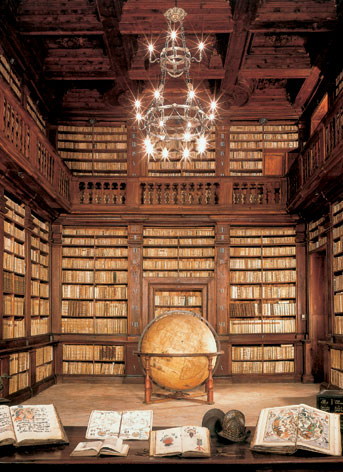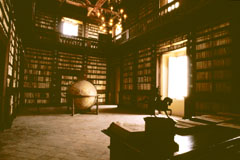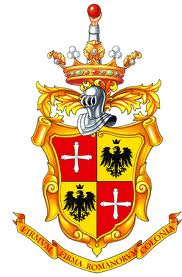|


|
Romolo Spezioli Lybrary
and the Globe Room
city of Fermo
The entrance to Fermo’s Piazza del Popolo is extremely fascinating: one has the impression of treading the boards of a large stage on a slight slope, on which the exclusive palaces and lodges are the wings, whilst the citizens that populate it are the absent-minded audience.
Your gaze will soon be one captured by the Palazzo dei Priori, the oldest public building in the city of Fermo and custodian of the Romolo Spezioli Civic Library. To visit it, you need to cross its large rooms and grand staircases, whilst paying attention to many works of art that are exhibited here: from the paintings by Vittorio Crivelli to The Nativity, an early work of Peter Paul Rubens (1860).
During the 17th century, the century that public libraries unfolded in Europe, the studium was necessary for the city to satisfy the demands of the studious youth and to become the fulcrum of a lively and worldly cultural life.
It was Cardinal Decio Azzolino the Younger, a figure in international fame and an adviser to Christina, Queen of Sweden, who, in 1688, at his own expense, fitted out the Palazzo dei Priori Room in an affordable way, so that it was a splendid room designed for keeping volumes of books. Until then, the room had been used for theatrical productions.
The library contains over 30,000 volumes, 16,000 of which, predominantly dating back to the sixteenth century, come mostly from the collection of Romolo Spezioli, a doctor from Fermo who was trustworthy of Christina, Queen of Sweden.
The volumes are neatly arranged on wooden shelves that stretch up to a ceiling which is inlaid by the hands of skilled and expert artisans. The volumes include over 3,000 precious sixteenth-century manuscripts and 861 incunabula, one of which dates back to 1493 and is by Christopher Columbus.
In the large room, positioned at arms length is a beautiful globe designed by cartographer, Silvestro Amanzio Moroncelli in 1713, which, with its 185cm diameter, shows the lands that were known to the world at that time and gives us the impression of a place suspended in time between the incredible collection of manuscripts from the past and the knowledge that the world has since expanded, and has at the same time, eradicated the distance between places and cultures.
Special thanks to:
Municipality of Fermo’s Tourism Department

Copyright Liberation Ventures Ltd.
|